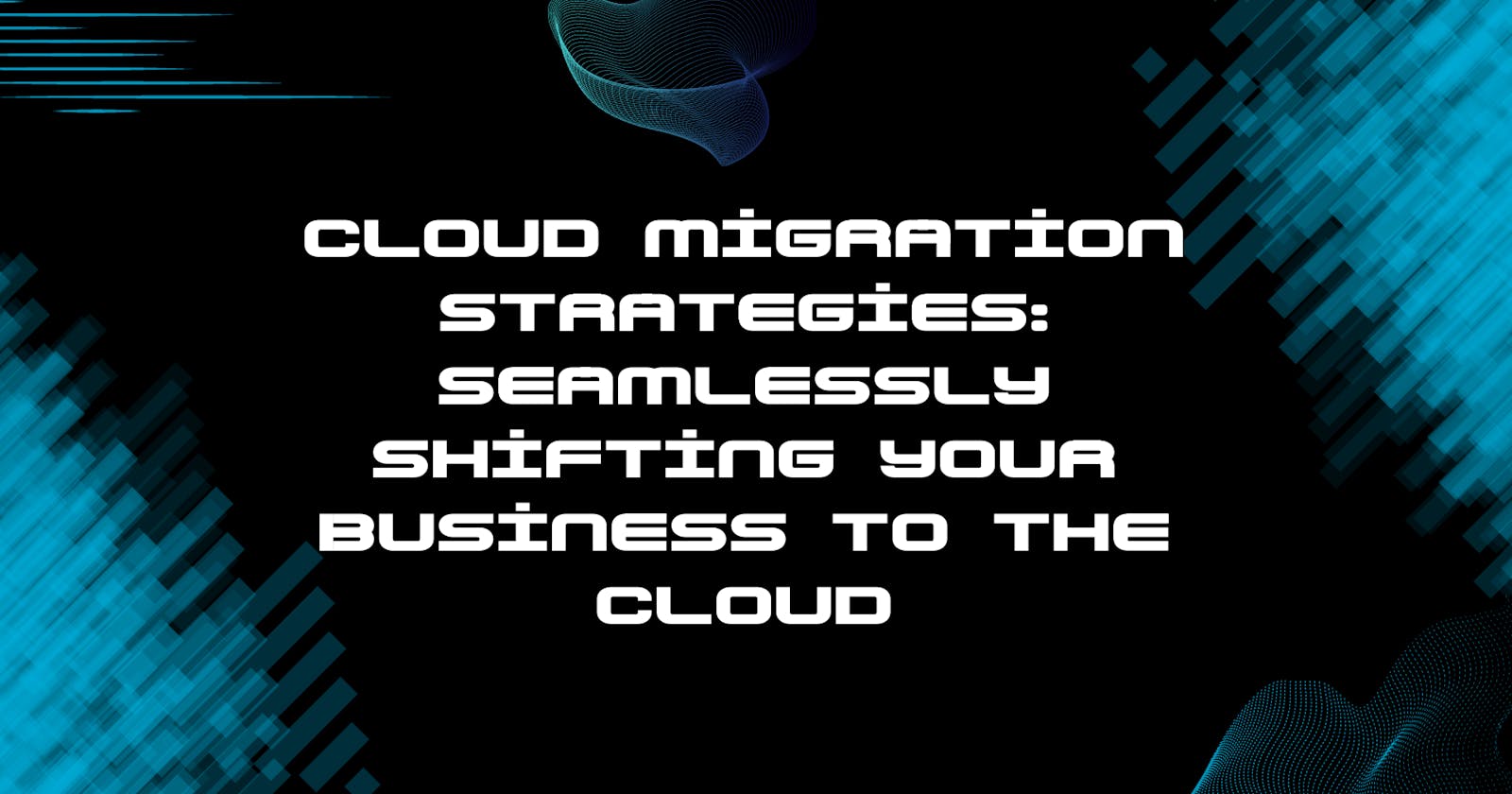Introduction
In the digital era, businesses are increasingly recognizing the benefits of cloud computing. Cloud migration is a strategic move that can optimize operations, enhance scalability, and drive innovation. However, executing a successful cloud migration requires careful planning and consideration. In this blog, we will explore effective cloud migration strategies to help businesses seamlessly shift to the cloud with the assistance of a reputable cloud computing company.
Understanding Cloud Migration
Before delving into the strategies, let's briefly understand what cloud migration entails. Cloud migration is the process of moving applications, data, and other business elements from on-premises infrastructure to the cloud. It involves selecting the right cloud service provider and determining the best migration approach for each application or workload.
1. Assessing Your Current Infrastructure
The first step in any cloud migration strategy is to assess your current infrastructure. A reputable cloud computing company can conduct a comprehensive evaluation of your existing IT environment, identifying applications, workloads, and data suitable for migration. This assessment helps in understanding potential challenges and opportunities for improvement.
2. Identifying Migration Goals and Priorities
Determine the primary objectives of your cloud migration. Whether it's cost optimization, improved performance, enhanced security, or increased agility, defining clear goals will guide the migration process. Prioritize applications critical to your business operations, as their successful migration is crucial for a seamless transition.
3. Choosing the Right Cloud Service Model
A cloud computing company can assist in selecting the appropriate cloud service model that aligns with your business needs. Consider Infrastructure as a Service (IaaS), Platform as a Service (PaaS), or Software as a Service (SaaS) based on your application requirements and desired level of control.
4. Opting for a Gradual Approach (Phased Migration)
Rushing into a full-scale migration can be risky. A gradual, phased migration approach is often recommended. Start with low-risk applications and gradually move more critical workloads as your team gains confidence in the cloud environment. This minimizes disruptions and allows for better issue management.
5. Employing Data Security and Compliance Measures
Data security is paramount in any cloud migration. Work closely with your cloud computing company to implement robust security measures and compliance protocols. Encryption, identity and access management, and regular audits should be part of the strategy.
6. Leveraging Cloud Backup and Disaster Recovery
A cloud-based backup and disaster recovery strategy are essential for ensuring business continuity. Cloud computing companies can help set up reliable backup and recovery solutions, safeguarding your data against potential losses or disruptions.
7. Performance Testing and Optimization
Before fully transitioning to the cloud, conduct thorough performance testing. Analyze application performance in the cloud environment and optimize as needed. This step ensures that the cloud infrastructure can handle the expected workload and meets performance expectations.
8. Employee Training and Change Management
Cloud migration impacts not only the technology but also your workforce. Employee training and change management programs are critical to help employees adapt to the new cloud-based environment. This fosters a smooth transition and maximizes productivity.
Conclusion
Cloud migration is a transformative journey that requires careful planning, expertise, and guidance from a trusted cloud computing company. By following the right cloud migration strategies, businesses can achieve a seamless transition to the cloud, unlocking its full potential for scalability, innovation, and competitiveness in the digital landscape. Embrace the power of the cloud with a well-thought-out migration strategy, and reap the benefits of modern, cloud-based infrastructure for your organization.
